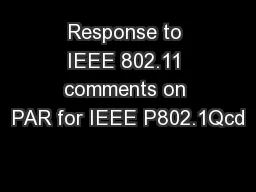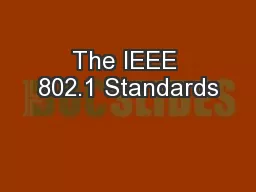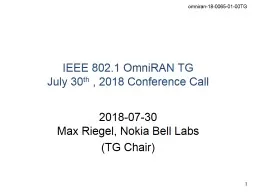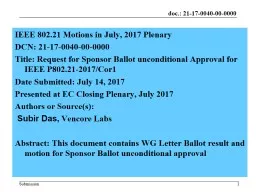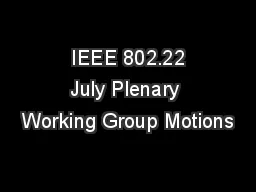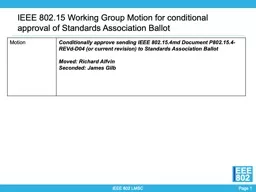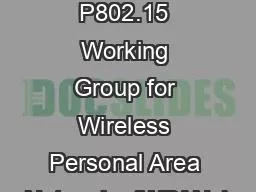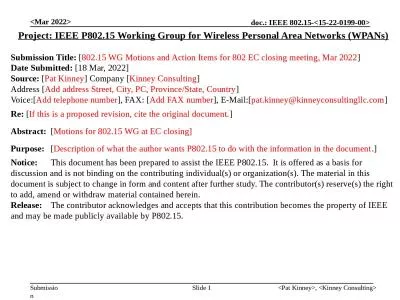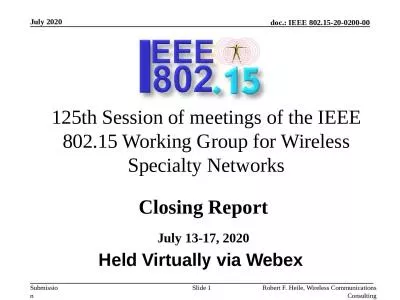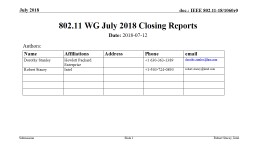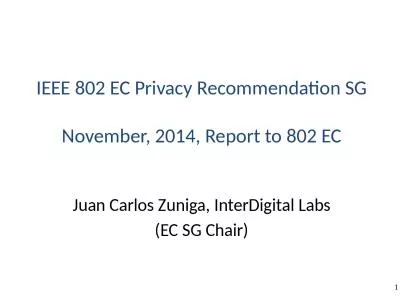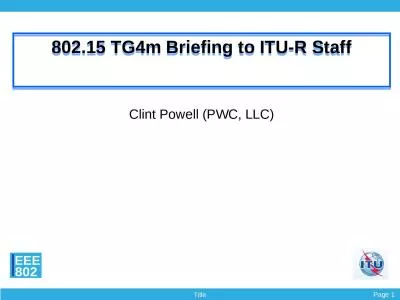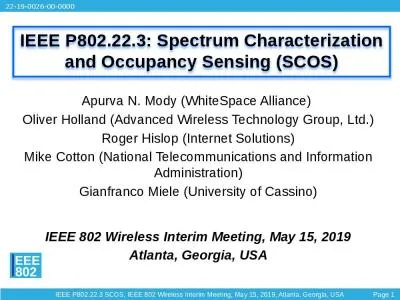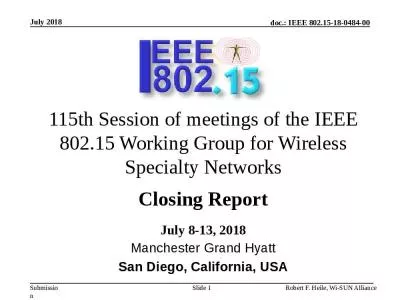PPT-Response to IEEE 802.11 comments on PAR for IEEE P802.1Qcd
Author : pasty-toler | Published Date : 2016-07-13
July 2013 July 2013 Pat Thaler IEEE 8021 DCB task group chair Slide 1 8021Qcd PAR Does IETF provide any similar VLAN tag No VLAN tags are defined in IEEE 8021Q
Presentation Embed Code
Download Presentation
Download Presentation The PPT/PDF document "Response to IEEE 802.11 comments on PAR ..." is the property of its rightful owner. Permission is granted to download and print the materials on this website for personal, non-commercial use only, and to display it on your personal computer provided you do not modify the materials and that you retain all copyright notices contained in the materials. By downloading content from our website, you accept the terms of this agreement.
Response to IEEE 802.11 comments on PAR for IEEE P802.1Qcd: Transcript
Download Rules Of Document
"Response to IEEE 802.11 comments on PAR for IEEE P802.1Qcd"The content belongs to its owner. You may download and print it for personal use, without modification, and keep all copyright notices. By downloading, you agree to these terms.
Related Documents

